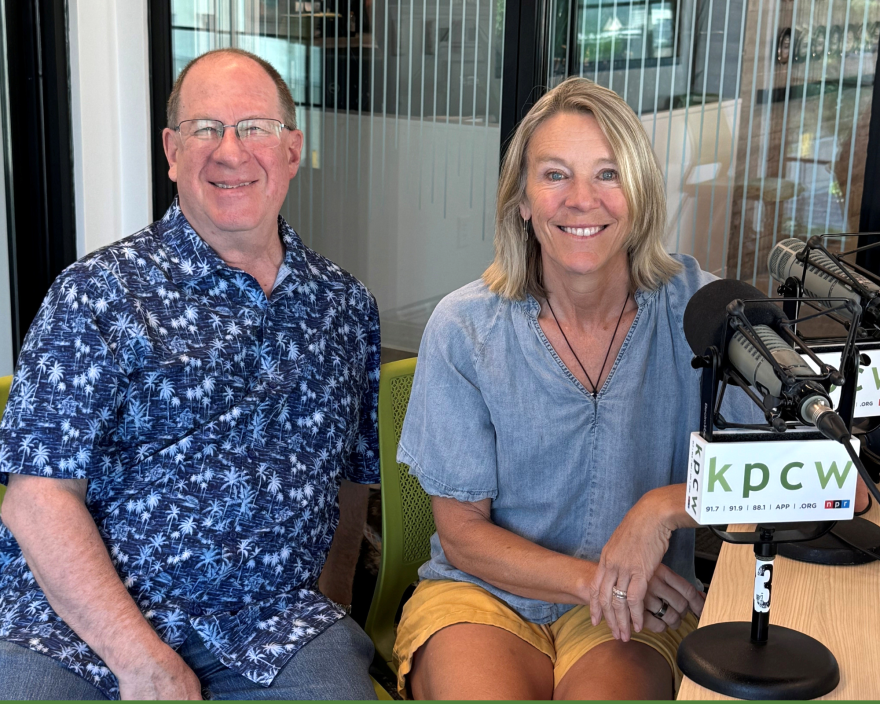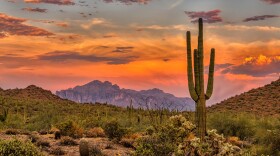
Cool Science Radio is a weekly, hour-long program that focuses on the latest developments and discoveries in the fields of science and technology. Co-hosts Lynn Ware Peek and Scott Greenberg decipher what's new with science and technology experts in an entertaining, amusing and accessible way.

From the discovery of new dinosaurs to the science of an avalanche, from the secret technology behind Facebook, to the latest developments in nanotechnology — Cool Science Radio hosts Lynn Ware Peek and Scott Greenberg decipher science and technology discoveries in an entertaining, amusing and accessible way. If they can understand it, so can you.
Cool Science Radio is sponsored by:
For questions and inquiries, or to inquire about appearing on the show, contact the hosts directly at coolscienceradio@kpcw.org.
-
Dr. Catriona Wallace discusses the ideas in her new book, “Rapid Transformation,” which outlines a science based framework for accelerating leadership development. Wallace explains how ritual, awakened thinking and emerging technology can help leaders adapt more quickly to social and technological change.
-
Author Matthew Cobb discusses his forthcoming book, “Crick: A Mind in Motion,” which explores the life, collaborations and the scientific breakthroughs of Nobel laureate Francis Crick.
-
Christopher Gregg explores the surprising genetic links between humans and hibernating animals, what these discoveries reveal about resilience and how this emerging science could transform medicine.
-
Geologist Jeff Moore explains how vibration analysis, usually used on natural arches and rock formations, is revealing the hidden biomechanics of the saguaro cactus.
-
Powder Watts founders Thomas Clardy and Kai Kuck discuss how rooftop heat cables became one of the largest hidden sources of winter energy waste and why computer vision and automated control can turn a long-ignored system into a valuable tool for grid stability.
-
Author Alex Pentland discusses how modern technology often overlooks community, why shared stories drive human behavior and how AI can be redesigned to strengthen collective understanding instead of eroding it.
-
Dr. Catriona Wallace explains how ritual, awakened thinking and emerging technology can help leaders adapt more quickly to social and technological change in her new book, “Rapid Transformation.” Then author Matthew Cobb discusses his forthcoming book, “Crick: A Mind in Motion,” which explores the life, collaborations and the scientific breakthroughs of Nobel laureate Francis Crick.
-
Christopher Gregg explores the surprising genetic links between humans and hibernating animals, what these discoveries reveal about resilience and how this emerging science could transform medicine. Then geologist Jeff Moore explains how vibration analysis, usually used on natural arches and rock formations, is revealing the hidden biomechanics of the saguaro cactus.
-
Powder Watts founders Thomas Clardy and Kai Kuck discuss how rooftop heat cables became one of the largest hidden sources of winter energy waste and why computer vision and automated control can turn a long-ignored system into a valuable tool for grid stability. Then, author Alex Pentland discusses how modern technology often overlooks community, why shared stories drive human behavior and how AI can be redesigned to strengthen collective understanding instead of eroding it.
-
Acclaimed author Simon Winchester discusses “The Breath of the Gods,” his sweeping new book on the power, mystery and history of wind, and how it continues to shape civilization, climate, and conflict. Then, Monterey Technologies’ Todd Cloutier and Tom Sharkey explain how human-centered design and human engineering shape everything from submarines to software, ensuring complex systems help people make better, safer decisions.







